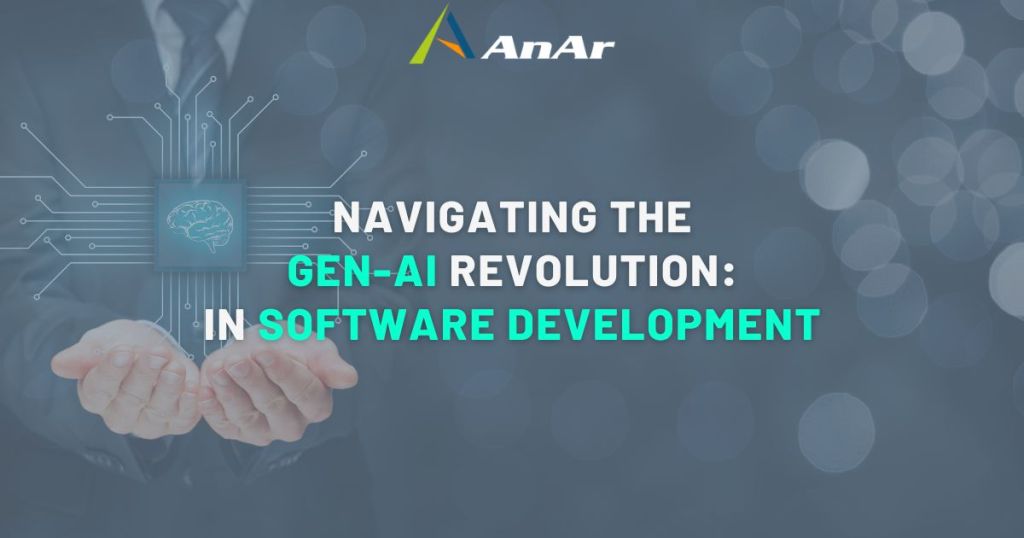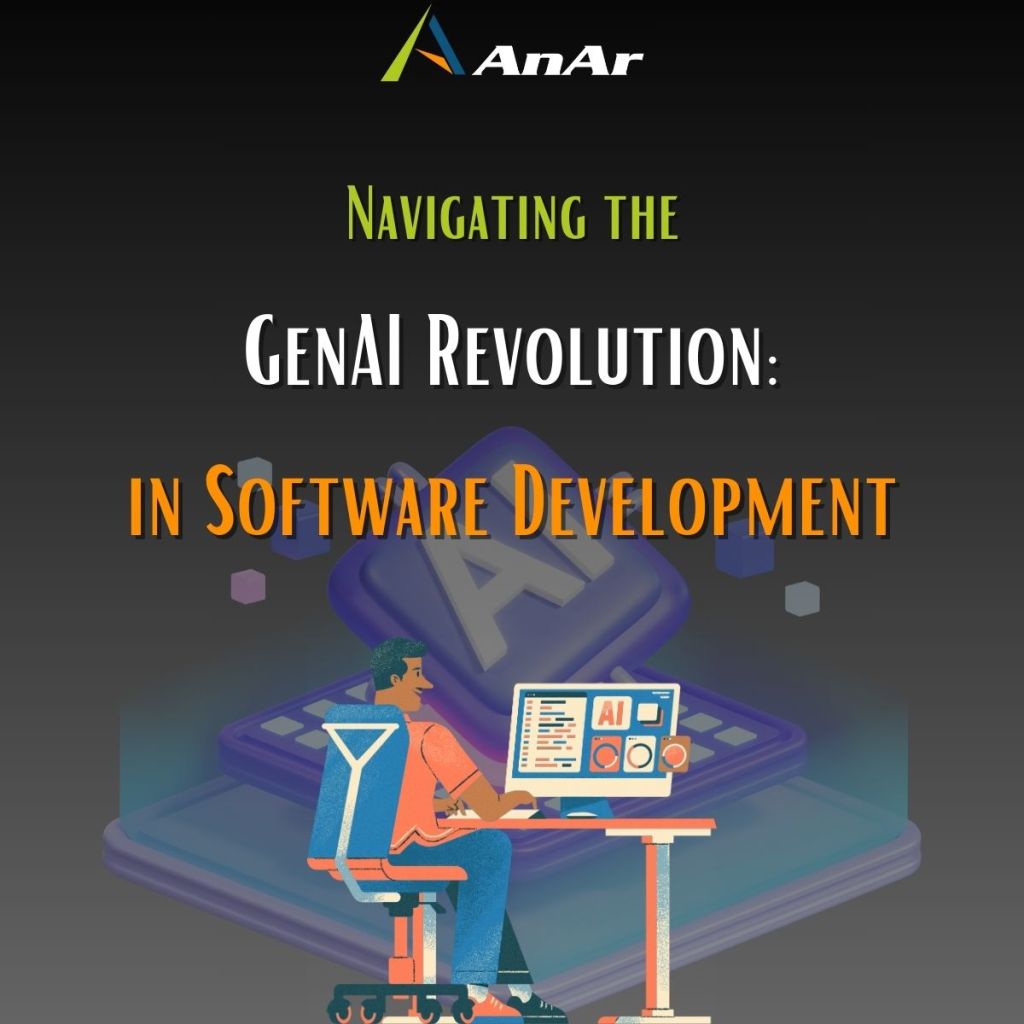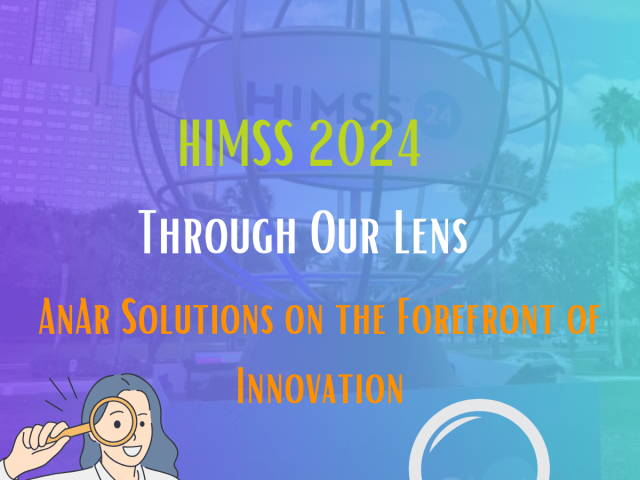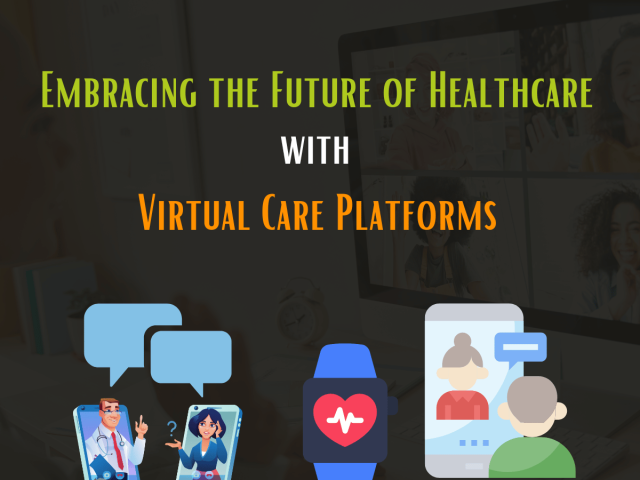In the world of software development, a storm is brewing. It’s not just a buzz, it’s a paradigm shift. Generative AI (GenAI) is poised to disrupt the status quo, promising to transform the way we create software — but only if we grasp its true potential.
Misunderstanding GenAI as merely a code-generating tool is like viewing a smartphone as a fancy pocket calculator. It’s a massive underestimation. GenAI’s capabilities extend far beyond code, reaching into requirements gathering, UI/UX design, testing, and beyond. It offers a new way of thinking about the Software Development Life Cycle (SDLC), one that could redefine productivity, creativity, and innovation.
But with great power comes great responsibility. Business and technology leaders must step forward to guide this transformation effectively. They must understand where GenAI shines and where it requires a human touch. By embracing this collaboration, they can unlock unprecedented levels of efficiency, accelerate time to market, and empower developers to focus on the most impactful tasks.
In this blog, we’ll explore the exciting possibilities and practical implications of GenAI in the SDLC. We’ll dive into its potential to streamline workflows, unleash creative potential, and drive a new era of software development. But we’ll also address the challenges and considerations, including ethical implications and the need for thoughtful integration.

Where can generative AI (GenAI) add value within the software development lifecycle?
The potential of generative AI (GenAI) extends far beyond simply boosting code productivity, offering significant value across the entire software development lifecycle (SDLC). However, accurately quantifying this value remains a challenge. Focusing solely on measuring GenAI’s impact through coding speed risks overlooking its broader potential to revolutionize the development process.
At AnAr Solutions, we believe GenAI should be viewed as a powerful tool complementing effective working practices and well-structured teams. This holistic approach can drive improvements in key areas like:
- Reduced time-to-market: Streamlining development workflows and optimizing resource allocation.
- Enhanced software quality: Proactive bug detection, streamlined testing processes, and improved documentation accuracy.
- Boosted team morale: Enabling efficient knowledge sharing, reducing manual drudgery, and fostering a more collaborative environment.
While recent studies often focus on measuring coding speed for specific, well-defined tasks, this narrow perspective neglects the significant impact GenAI can have on other, inherently complex aspects of software development. These are often the areas where friction points and inefficiencies reside, and where GenAI’s ability to analyze patterns and automate tasks can be most transformative.
Our internal experiments using GenAI tools like ChatGPT, Bard and GitHub Copilot across the SDLC have yielded promising results, indicating potential productivity gains of 10–40%. However, realizing these benefits requires careful consideration of several key factors:
- Developer experience: Engineers must be equipped to craft effective prompts, critically evaluate GenAI outputs, and maintain quality control.
- GenAI familiarity: Users need awareness of the tools’ capabilities and limitations, knowing when to leverage them effectively and when to rely on their own expertise.
- Problem complexity: GenAI excels at well-defined tasks. As complexity increases, its effectiveness and potential for productivity gains diminish.
Recognizing these considerations, let’s delve into ways GenAI can Enhance Software Development Lifecycle (SDLC):
AI-powered tools aren’t exclusive to programmers; their impact extends to project managers, business analysts, software coders, and testers. Generative AI empowers these professionals, enhancing their existing skills and facilitating the creation of high-quality software in a more efficient and cost-effective manner. This trend underscores the growing significance of generative AI in addressing the increasing requirements for custom software design, development, and deployment.
The integration of generative AI opens up significant possibilities for optimizing and expediting each phase of the development process.
Gathering and Documenting Requirements
GenAI significantly streamlines the initial requirement gathering process through automation and intelligent analysis. By leveraging existing documentation, user feedback data, and even unstructured conversations from interviews and brainstorming sessions, GenAI can efficiently synthesize well-structured and comprehensive requirements documents. This not only reduces the time and effort required for manual analysis but also promoting a more thorough and accurate understanding of user needs. Further, GenAI’s ability to identify potential inconsistencies or gaps in requirements facilitates proactive refinement and ensures alignment with project objectives.
Planning and Estimation
Drawing upon historical data and vast knowledge repositories, generative AI promises enhanced project planning accuracy. Its capabilities span precise project estimation, optimized resource allocation, and the rapid creation of detailed work breakdown structures and schedule tracking documents. This automation not only streamlines project management but also fosters informed decision-making for improved project outcomes.
Design and Development
Generative AI holds significant potential to streamline and enhance the design and development phases of the SDLC. It demonstrates valuable capabilities in the following areas:
- Code Generation: GenAI can effectively translate natural language descriptions into functional code snippets, reducing the manual effort involved in implementing routine functionalities. This not only accelerates development but also minimizes the potential for errors introduced through manual coding.
- UI/UX Design: GenAI can generate diverse UI/UX mockups based on user preferences and industry trends, providing a valuable starting point for exploration and refinement. This capability accelerates the design process and boosts creativity by presenting a wider range of possibilities for consideration. However, it’s crucial to emphasize that GenAI serves as a tool to augment, rather than replace, the developer’s artistic vision and expertise.
Testing and Deployment
Forget about repetitive test-case crafting. GenAI can analyze code and user behavior patterns to generate comprehensive and personalized test suites, targeting potential vulnerabilities and edge cases. Imagine deploying updates seamlessly, with GenAI anticipating potential roadblocks and orchestrating smooth rollouts. This enhanced testing and deployment efficiency frees up developers to focus on innovation and problem-solving.
Automated Documentation
GenAI’s impact extends beyond code, revolutionizing the traditionally painstaking task of software documentation. By automatically generating user guides, technical manuals, change logs, and even annotated code comments, GenAI streamlines the process, saving time and resources. The benefits are twofold:
- Enhanced Efficiency: Consistent formatting, reduced maintenance, and automatic updates lead to a significant efficiency boost.
- Improved Accessibility: Diverse documentation formats cater to various user needs and learning styles, fostering better comprehension.
What are the challenges and risks with GenAI in Software Engineering and how to navigate through it?
Generative AI (GenAI) is revolutionizing software engineering by automating documentation, code comments, and change logs, boosting efficiency and consistency. However, navigating this new frontier requires acknowledging and addressing inherent challenges and risks.
Talent Gap
Implementing GenAI effectively requires specialized skills. Bridge the gap by:
- Investing in training: Equip developers with GenAI literacy and integration skills.
- Fostering cross-functional collaboration: Break down silos between AI experts and developers.
- Effective communication: Ensure non-technical stakeholders understand AI’s potential and limitations.
Data Quality and Availability
Biased or inaccurate data can lead to flawed outputs. Ensure your GenAI tools by:
- Implementing rigorous data management practices: Focus on data accuracy, completeness, and relevance.
- Establishing data governance frameworks: Define data ownership, access controls, and quality standards.
Enterprise Integration
Integrating GenAI seamlessly into existing workflows is crucial. Avoid disruptions by:
- Careful planning: Assess data sources, workflows, and compatibility with legacy systems.
- Phased implementation: Start with low-risk pilots and gradually scale up based on success.
Legal and Ethical Issues
Stay ahead of the curve by:
- Establishing an AI governance framework: Define ethical principles and compliance guidelines for GenAI use.
- Prioritizing data privacy and security: Implement robust measures to protect user data.
AI Hallucinations and False Confidence
One major concern with GenAI is the potential for “hallucinations,” where models generate inaccurate or nonsensical outputs despite appearing confident and plausible. This can be particularly dangerous in the SDLC, as developers might unknowingly integrate flawed code or documentation based on these hallucinations.
Here are some strategies to mitigate this risk:
- Rigorous Testing: Implement comprehensive testing procedures to identify and eliminate AI-generated errors before integration.
- Human Oversight: Maintain a process for human experts to review and validate AI outputs before acceptance.
- Transparency and Explainability: Choose GenAI tools that offer insights into how outputs were generated, allowing developers to better understand and evaluate their reliability.
Beyond Challenges, it is a must to embrace innovation!
Don’t just manage risks, explore AI’s potential! Encourage your team to:
- Proactively propose AI-powered solutions: Identify business challenges where GenAI can add value.
- Prioritize user experience: Design AI tools that are intuitive and user-friendly.
- Embrace experimentation: Encourage exploration and iteration to discover new applications for GenAI.
What are the emerging Trends and the future landscape of GenAI in software development?
GenAI’s transformative powers are just beginning to unfold in the software development realm. Beyond the applications you mentioned, we can expect to see:
1. Automated Bug Fixing: Imagine GenAI not just identifying bugs but automatically suggesting and implementing fixes based on its code analysis and knowledge base. This could dramatically reduce debugging time and improve software quality.
2. Enhanced Security Threat Detection: GenAI can learn from past vulnerabilities and real-time data streams to predict and pre-empt security threats with unparalleled accuracy. This proactive approach could revolutionize cybersecurity in software development.
3. Personalized Coding Assistance: Forget generic code completion — GenAI can adapt to individual developer styles and preferences, offering contextually relevant suggestions and code snippets, accelerating development speeds and fostering creativity.
4. Citizen Developers and the Democratization of Software Creation: By simplifying the coding process through natural language interfaces and AI-powered tools, GenAI has the potential to empower non-programmers to build basic applications, democratizing software creation and unlocking a new wave of innovation.
5. The Human-AI Collaboration Paradigm: The long-term vision is not about GenAI replacing developers, but rather a synergistic partnership. Developers will act as strategic guides, utilizing GenAI’s automation and augmentation capabilities to achieve unprecedented levels of productivity and innovation.
This collaborative future will likely necessitate changes in:
- Software development education: Adapting curricula to focus on collaboration with AI tools and ethical considerations in GenAI implementation.
- Job roles and responsibilities: A shift towards higher-level problem-solving and strategic thinking for developers, while GenAI handles routine tasks.
- The very nature of software development: A more dynamic and iterative process, fueled by continuous learning and adaptation through AI-powered tools.
The future of software development with GenAI is vibrant and full of possibilities. While challenges remain, the potential for increased efficiency, creativity, and accessibility is undeniable. It’s an exciting time to be a developer, and we can only imagine what the future holds as we learn to harness the power of GenAI for good in the world of software creation.
Conclusion
As we stand at the precipice of this transformative era, it’s clear that GenAI is not just a buzzword, but a force poised to redefine the very fabric of software development. At AnAr Solutions, we aren’t simply watching from the sidelines — we’re actively embracing the GenAI revolution.
We’ve integrated GenAI tools throughout our SDLC process, from automating routine tasks to empowering developers with personalized coding assistance. We see this not as a threat, but as an opportunity to unleash human creativity and ingenuity, pushing the boundaries of what’s possible.
The future of software development is a symphony of human expertise and AI-powered augmentation. It’s a future where AnAr Solutions stands at the forefront, harnessing the power of GenAI to craft innovative solutions that shape the world around us. So, buckle up and join us on this exciting journey — the future of software development is brighter than ever, and AnAr Solutions is leading the way.





